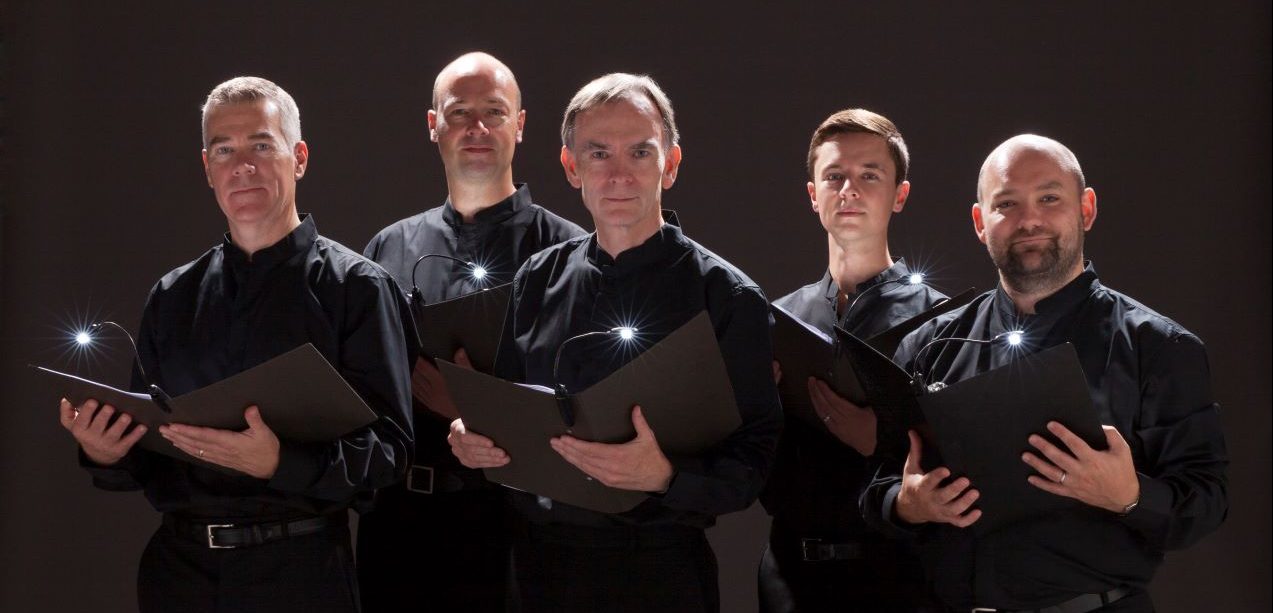Christ Church Cathedral | Map
Orlando Consort; Matthew Venner; Mark Dobell; Donald Greig; Angus Smith; Robert Macdonald
An intense experience awaits us as we journey to medieval France to witness the trial of Joan of Arc: a silent movie classic, the award-winning Orlando Consort provide beautiful live choral music composed and performed during her lifetime, intricately tailored to enhance the harrowing drama. Condemned unseen in France on its release, vilified by the Catholic authorities and even banned outright in England, Carl Theodor Dreyer’s film, La Passion de Jeanne d’Arc (1928), is widely recognised as a masterpiece.
Formed in 1988, the Orlando Consort rapidly achieved a reputation as one of Europe’s most expert and consistently challenging groups performing repertoire from the years 1050 to 1550. Their work successfully combines captivating entertainment and fresh scholarly insight; the unique imagination and originality of their programming together with their superb vocal skills has marked the Consort as the outstanding leaders of their field.
“Simultaneously ravishing and reverential.” – Los Angeles Times
To view/download the programme, click here.
This concert is generously supported by the Brennan Spano Family Foundation and Janette McMillan & Douglas Graves
Credits
The Passion of Joan of Arc (La Passion de Jeanne d’Arc) (1928)
Originally exhibited in Denmark as Jeanne d’Arc’s Lidelse og Død (Joan of Arc’s Suffering and Death)
Director: Carl Theodor Dreyer
Script: Carl Theodor Dreyer
Historical Adviser: Pierre Champion
Cinematography: Rudolf Maté
Art Directors: Hermann Warm and Jean Hugo
Costumes: Valentine Hugo
Assistant Directors: Paul La Cour and Ralph Holm
Jeanne: Renée Maria Falconetti
Pierre Cauchon: Eugène Silvain
Jean D’Estivet: André Berley
Nicolas Loyseleur: Maurice Schutz
Jean Massieu: Antonin Artaud
Jean Lemaître: Gilbert Dalleu
Guillaume Erard: Jean d’Yd
Jean Beaupère: Louis Ravet
Programme Notes
Voices Appeared: Sound and Visions by Donald Greig
‘Voices appeared’ is Jeanne d’Arc’s gnomic explanation of how St Michael, St Catherine and St Margaret announced themselves to her. It aptly describes the paradox of a silent movie that is essentially a court-room drama about a woman inspired by the sound of voices, and is also the starting point for our project.
In common with many other great works of art, when Carl Theodor Dreyer’s La Passion de Jeanne d’Arc was first released its qualities weren’t immediately recognised. It opened in Copenhagen in April 1928, though it wasn’t until October in that same year that it received its second premiere in Paris, and that only after changes insisted upon by the French church. Across the channel in England it was banned for a year because of its depiction of the brutality of the English soldier, ironic given that their real treatment of Joan was considerably worse. Of the reviewers, only Mordaunt Hall, writing in the New York Times, focused on the things for which the film is now known – its startling visual style and the central performance:
France can well be proud of … The Passion of Jeanne d’Arc, for while Carl Dreyer, a Dane, is responsible for the conspicuously fine and imaginative use of the camera, it is the gifted performance of Maria Falconetti as the Maid of Orleans that rises above everything in this artistic achievement.
An historical context informed Dreyer’s choice of Joan of Arc as his subject. She was canonised in 1920, and in 1925 Joseph Delteil published a flamboyant biography of the new Saint, the rights to which Dreyer acquired. Ultimately, he set Delteil’s text aside and instead devoted himself to his more familiar approach – research. His main source was the transcript of the trial specifically Pierre Champion’s edition, published in 1922. Champion acted as historical advisor and though some of the film’s dialogue comes directly from this source, the later nullification trial of 1455-6 informs a great deal of the drama. This commitment to authenticity extended to the design, and a staggering one million of the seven-million franc budget was given over to building the set. The production designer Hermann Warm had worked on the German Expressionist classic, The Cabinet of Dr Caligari, but Dreyer eschewed grand vistas of medieval architecture and townscapes in favour of close-ups and fast editing, reducing the art direction to mere details glimpsed in the background. The producers were not best pleased and one can only assume Warm was considerably more irked.
Much has been written about Dreyer’s visual rhetoric. The anachronistic use of irises to mask the image, a refusal to adhere to the conventions of screen direction in looks and movement (well-established since the first decade of the 20th century), the concentration on close-ups to the exclusion of comprehensible spatial logic, and the low camera positions produce paralysing claustrophobia and confusion. Maria Renée Falconetti’s appearance is ranked amongst the greatest of screen performances, but part of its power is due to an effect first noted by Kuleshov, the Russian film director, who demonstrated that the spectator’s reading of an actor’s emotion is contingent on the surrounding shots. Falconetti’s face here becomes a second screen onto which we project our own psychic discomfort, thereby doubling the heroine’s emotional state.
Music, no less than montage, contains the same potential power to construct meaning. With this in mind our initial task was to determine the emotional contours of each scene and second-guess Dreyer’s wishes. Here we followed the tried-and-tested method of matching music to image that continues today, where the director and composer ‘spot’ the film, i.e. decide where the music cues should begin and end and its function. Sometimes the music we chose has a secondary, tangential relation to the scene – textual, historical, liturgical; and we have certainly not eschewed the more obvious clichés of film music – mickey mousing as it is pejoratively known – where a dynamic or rhythmic motif coincides with specific action. But our guiding principle is that at all times the musical performance should serve and ultimately illuminate this extraordinary film.
Exactly what kind of music Dreyer wanted to accompany screenings of La Passion de Jeanne d’Arc is unknown but the notion that he wanted his film to be appreciated in chaste silence is an exaggeration. He made a passing comment along such lines to Eileen Bowers, curator of film at the Museum of Modern Art in New York City, but qualified it: he wasn’t happy with the scores that he had thus far heard. And one only has to look at his next project, Vampyr (1932), a very different film in many ways (not least because it was the first time he worked with sound), to note a preference for a through-composed score.
As the director, he would have had little control over the exhibition of his film, nor did he have any hand in the two scores written for its premieres. His thoughts about the 1952 version, cobbled together by Giuseppe Maria Lo Duca with music by J S Bach and Scarlatti amongst others, are well documented. Aside from what the film historian did to the careful compositions (the added sound strip involved cropping the image), Dreyer’s main objection was that the music was anachronistic. But Dreyer went further than this: why didn’t Lo Duca use music from the era of Joan’s own life? A further criticism levelled by others at the Lo Duca version was that in using religious music the soundtrack misrepresented the anti-clerical argument of the film, yet this point was never made by Dreyer, and with good reason: Joan’s own faith is never in doubt and Dreyer himself argued that the priests were not so much hypocrites as misguided zealots. Hopefully our approach answers those specific points and might even have met with Dreyer’s approval.
Certainly Dreyer makes the would-be composer’s task difficult. With no establishing shots at all – obvious moments for musical cues – and an almost schizophrenic alternation between rapid cutting (the film has 1,500 cuts in its 96 minutes) and still contemplation, most notably of Falconetti’s face, the rhythm of the film poses specific problems. All of which makes our choice of pre-existing music surprisingly appropriate. The tactus (beat) of this music remains broadly organic, as opposed to the enslaved cueing of modern scores (where computers dictate metronome speeds measured to the second decimal place). Our response echoes the practice of original silent-film accompaniment, though instead of a conductor we use a visual guide track. Throughout the film is our emotional prompt and the fluid flexibility of ensemble singing governs our performance.
All of the music you will hear comes from the early years of the fifteenth century, the period of Joan’s brief life, though whether Joan herself would ever have heard it is an unanswerable question. Charles VII, her king, was so short of money that he could no longer afford his own travelling choir (given such circumstances it is hardly surprising that so many French-born composers took up offers of employment in Italy), whereas Philip the Good, Duke of Burgundy, was patron to Dufay and Binchois, and the Regent of France, the Duke of Bedford, was patron to the English composer John Dunstable. It seems likely that Joan would have encountered at least some of the repertoire. An assiduous attendee of Mass, her travels took her to many large towns and cities, like Orléans, Troyes and Blois, all of which had choral foundations of one sort of another.
The early fifteenth century was a transitional period for polyphonic music. The earlier style is rooted in the fourteenth century, represented here by Richard Loqueville’s Sanctus (used in the scene in the torture room) and Billart’s Salve Virgo virginum (for the final hectic crowd scenes). Parallel fifths, fourths and octaves abound, as do the characteristic stark sixth-to-octave cadences. What will most strike the listener is the rhythmic interest and virtuosic flair in the upper parts which contrasts with the stolid plainchant in the accompanying voices. The later, more melodic style is evinced, not surprisingly, in the secular chansons – Dufay’s Je me complains (for which we have substituted words from the contemporary chronicler Christine de Pizan’s La Ditié de Jeanne d’Arc, written a year before Joan’s capture) and Gautier Libert’s haunting De Tristesse. Several other pieces display this sweeter, more consonant approach, such as Johannes De Lymburgia’s Descendi in hortum meum, and several instances of fauxbourdon – an improvised system of parallel first-inversion chords – which display a fondness for thirds and sixths characteristic of English music. For though England, France and Burgundy were almost constantly at war with each other, musical influence paid no heed to territorial boundaries. Indeed the English style, represented here by the Agincourt Carol and the anonymous O Redemptor, initiated the very transition from the earlier to the later styles. It was described by Martin Le Franc as the Contenance Angloise in his Le Champion des Dames, a work dedicated to Philip the Good, Duke of Burgundy, which elsewhere in its 24,000 verses made daring reference to Jeanne d’Arc, whom Philip had sold to the English.
A final note on the performance of the music. It is now generally accepted that all of the music you will hear was performed by voices alone, even where it is untexted. Whatever one’s position on this musicological issue, the more intimate medium of five unaccompanied voices is particularly appropriate to the portrayal of a woman whose divine inspiration came in the form of saintly voices.
© Donald Greig
Audience members are invited to read a full scene breakdown online, which gives complete details of the music used and the reasons behind its selection: http://www.orlandoconsort.com/scenebreakdown.htm
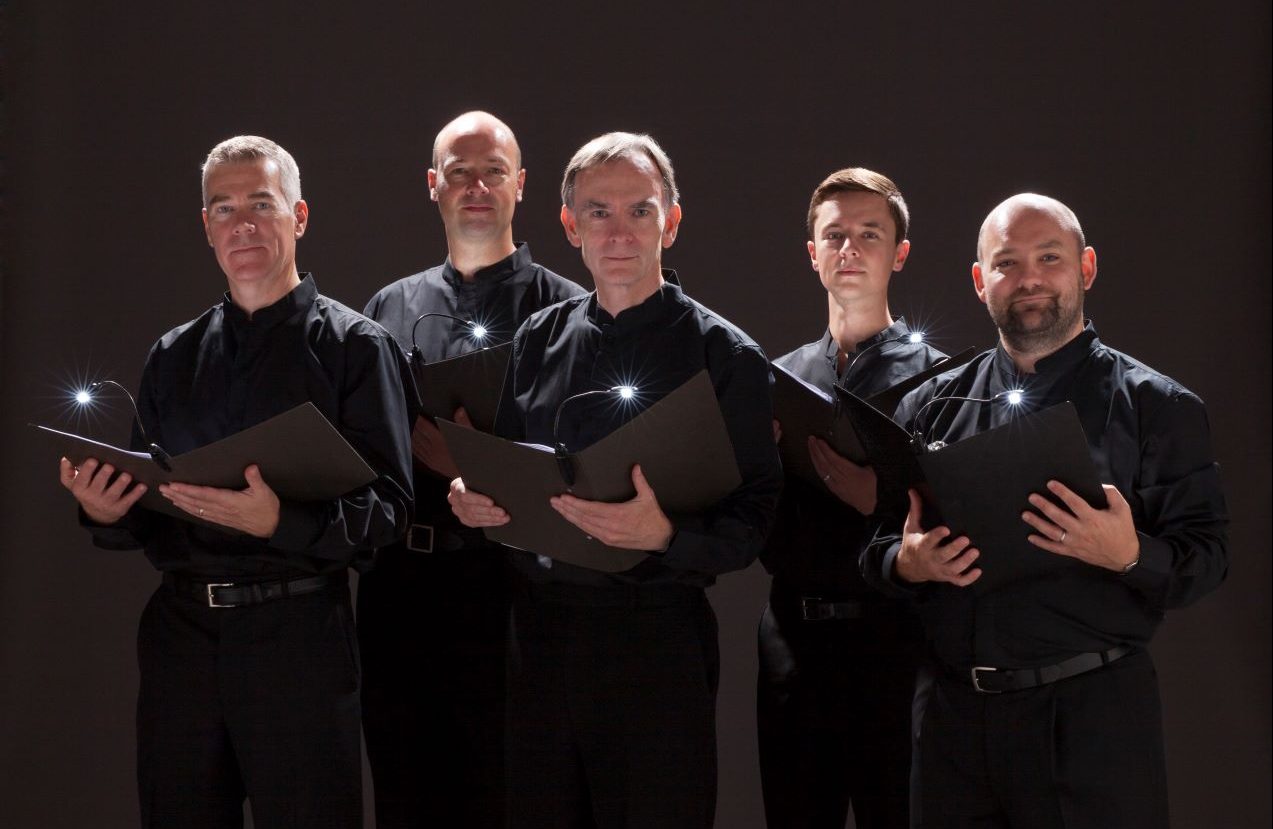
Orlando Consort
Formed in 1988 by the Early Music Network of Great Britain, the Orlando Consort rapidly achieved a reputation as one of Europe’s most expert and consistently challenging groups performing repertoire from the years 1050 to 1550. Their work successfully combines captivating entertainment and fresh scholarly insight; the unique imagination and originality of their programming together with their superb vocal skills has marked the Consort out as the outstanding leaders of their field. The Consort has performed at many of Britain’s top festivals (including the BBC Proms and the Edinburgh International Festival) and has in recent years made visits to France, Holland, Belgium, Germany, Italy, Sweden, Poland, the Czech Republic, Estonia, the USA and Canada, South America, Singapore, Japan, Greece, Russia, Austria, Slovenia, Portugal and Spain.
The Consort’s impressive discography for Saydisc, Metronome, Linn, Deutsche Grammophon and Harmonia Mundi USA includes a collection of music by John Dunstaple and ‘The Call of the Phoenix’, which were selected as Early Music CDs of the Year by Gramophone Magazine; their CDs of music by Compère, Machaut, Ockeghem, Josquin, ‘Popes and Anti-Popes’, ‘Saracen and Dove’ and ‘Passion’ have also all been short-listed. Machaut’s ‘Messe de Notre Dame’ and ‘Scattered Rhymes’, an outstanding new work by British composer Tarik O’Regan and featuring the Estonian Philharmonic Chamber Choir, was short-listed for a BBC Music Magazine Award. The Consort is currently pursuing an epic project to record all the songs of Guillaume de Machaut for Hyperion; the first release (‘Le Voir Dit’) was selected by New York Times critics as one of their favourite classical CD releases of 2013 and has since been followed by 7 much-praised recordings. Also on the Hyperion label are an anthology of music by Loyset Compère , a survey of 14th century English music, and a Gramophone Award-shortlisted collection of songs by Guillaume Dufay.
The Consort’s performances also embrace the spheres of contemporary music and improvisation: to date they have performed over 30 world premières and they have created striking collaborations with the jazz group Perfect Houseplants and, for a project exploring historic Portuguese and Goan music, the brilliant tabla player Kuljit Bhamra. Recent concert highlights include a return visit to New York’s Carnegie Hall, the new Boulezsaal in Berlin, and a debut at the Salzburg Festival. The group continues to tour internationally with its grand project presenting Carl Theodor Dreyer’s silent masterpiece ‘La Passion de Jeanne d’Arc’ with a soundscape of music from the period in which the film is set, namely the early 15th century.
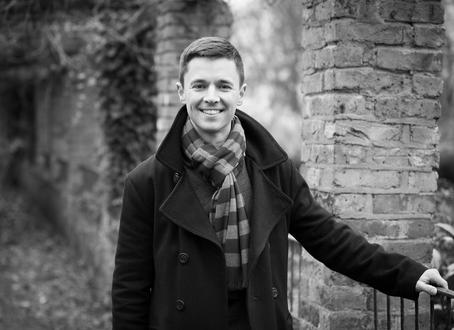
Matthew Venner
Matthew Venner began his singing career as a Chorister at Westminster Abbey and, following a Music Scholarship at Bedford School, went on to become a Choral Scholar at New College, Oxford.
He is now in demand as a consort singer and soloist. He was appointed a member of the St Paul’s Cathedral choir, London in 2004 and he joined the Orlando Consort in 2008, succeeding the founder-member Robert Harre-Jones. He has performed with many of the UK’s leading vocal ensembles including The Cardinall’s Musick, The King’s Consort, The Monteverdi Choir, The Sixteen and The Tallis Scholars.
As a soloist, recent concerts have included J.S. Bach’s St Matthew Passion with the King’s Consort in Pamplona and Valencia, and J.C. Bach’s Ach, dass is Wassers gnug hätte at Wroclaw Symphony Hall, Poland. He has also performed several world premieres, including James Macmillan’s Seven Angels and Alec Roth’s A Time To Dance.
He has sung on many recordings and can be heard as a soloist on Ex Cathedra’s disc of Bach’s St Matthew Passion recorded live at Birmingham Symphony Hall, and the Gabrieli Consort’s disc, Incarnation. He regularly records as a soloist for the National Forum of Music, Poland.
He has appeared in several stage productions including Heiner Goebbel’s I went to the house but did not enter with the Hilliard Ensemble at the National Theatre, Prague; Purcell’s King Arthur with I Fagiolini at the Spitalfields Festival, London; and the incidental music to Shakespeare’s The Tempest at the Globe Theatre, London. Most recently, he performed Gluck’s Orphée et Eurydice at the Royal Opera House with Sir John Eliot Gardiner and The Monteverdi Choir.
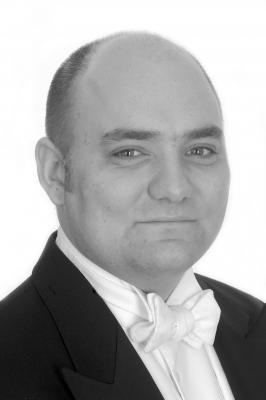
Mark Dobell
Mark Dobell was a choral scholar of Clare College, Cambridge, where he read Classics. He later undertook postgraduate studies in singing at the Royal Academy of Music where he was awarded the Clifton Prize for the best final recital.
Mark has worked as a soloist all over the world with renowned conductors including Harry Christophers, Sir John Eliot Gardiner, Sir Roger Norrington and Sir James MacMillan. His extensive concert and oratorio repertoire includes many of the major works of Handel, Bach and Mozart, as well as pieces by composers as varied as Monteverdi, Haydn, Mendelssohn, Britten, Pärt, Jonathan Dove and Karl Jenkins.
Recent highlights include performances of Monteverdi’s Vespers at the Royal Albert Hall in London, and in Boston and New York for the Handel and Haydn Society; Handel’s Israel In Egypt in Hong Kong for the Hong Kong Sinfonietta; Schütz’s Weihnachtshistorie at St John’s Smith Square in London; Bach’s Johannes-Passion and Weihnachts-Oratorium in Westminster Abbey; Mozart’s Requiem in Santiago de Compostela and Granada; Handel’s Messiah at the Palace of Versailles; Vivaldi’s Dixit Dominus in Amsterdam; Purcell’s King Arthur in the Usher Hall, Edinburgh; MacMillan’s Stabat Mater in the Sistine Chapel; and Handel’s Acis and Galatea in the Wigmore Hall. 2019 will see him giving further performances of Monteverdi’s Vespers around the UK, and Acis and Galatea in Bath, as well as performances of Haydn’s Creation, Bach’s Johannes-Passion and Mendelssohn’s St. Paul.
When not performing as a soloist, Mark enjoys a busy schedule with many leading British choirs and consorts, such as The Cardinall’s Musick, I Fagiolini, Gallicantus and The King’s Consort. He is proud to be a long-standing member of The Sixteen and The Orlando Consort, as well as helping to found The Agnes Collective. He has also been a member of the choir of Westminster Abbey since 2006.

Donald Greig
Donald Greig was a boy chorister at Westminster Abbey and a choral scholar at Canterbury Cathedral, the latter whilst studying at Kent University. He graduated with a First in Film Studies and English and undertook an MA by thesis in film theory. For a while, he reviewed films, lectured in film studies and semiology and eventually submitted to a career as a professional singer.
He was a regular member of The Tallis Scholars for twenty-five years, as well as singing for groups such as Gothic Voices, Taverner Consort, Fretwork and the Gabrieli Consort, amongst many others. He was a founder-member of The Orlando Consort. Alongside his role as an early-music specialist, he is a versatile session singer, happy in a number of idioms, appearing on countless film soundtracks and in pop music. He has thus sung for – in no particular order – Joni Mitchell, Stephen Sondheim, Elton John, Björk and Sting.
His first novel, Time Will Tell, was published in 2013. He has contributed articles to several journals such as Screen and Early Music, as well as several chapters for academic books. He has given lectures at many universities including Harvard, Stanford, Notre Dame, Heidelberg and Georgetown. He is currently an Honorary Research Fellow at the University of Nottingham, where he received his doctorate in music, and is researching the various intersections of early music and cinema.

Angus Smith
Angus Smith read American history at St. John’s College, Cambridge, where he was a choral scholar and continued his studies at the Guildhall School of Music and Drama.
His performances embrace a wide diversity of music, focusing especially on early and contemporary music, but also with a strong commitment to music education. He has performed with the Gabrieli and Taverner Consorts, the Tallis Scholars, Singcircle, English Chamber Orchestra, Monteverdi Choir, The Sixteen, Academy of Ancient Music, OAE, City of London Sinfonia, Scottish Chamber Orchestra, Singapore Symphony Orchestra, and the Ensemble Vocale Européen, and with conductors who include Ivan Fischer, Philippe Herreweghe, Richard Hickox, Sir Roger Norrington, Nicholas Kraemer, Joshua Rifkin, and Peter Eötvös.
Angus is also the Artistic Director of two chamber music festivals; Sheffield-based ‘Music in the Round’, the UK’s largest presenter of professional chamber music outside London, and ‘Music at Paxton’, located in the border area between England and Scotland. Angus has been a guest of Her Majesty Queen Elizabeth II at Buckingham Palace at an event celebrating music-making in Britain alongside celebrity musicians such as Brian May, Phil Collins, Eric Clapton, Suggs and Shirley Bassey.
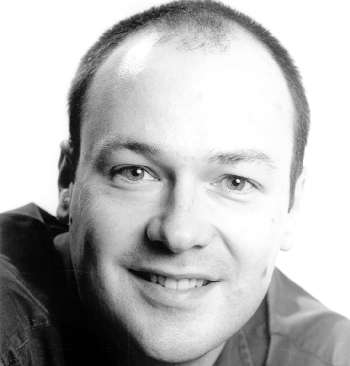
Robert Macdonald
Robert Macdonald was a chorister at Hereford Cathedral under Roy Massey and later an Academical Clerk at Christ Church, Oxford under Stephen Darlington where he read Biochemistry and Music.
After a brief period of postgraduate study at The Royal Academy of Music, he went on to develop a diverse career, primarily as a consort singer, but also as a soloist. He has sung for numerous conductors, including Sir John Eliot Gardiner, Raymond Leppard, Sir David Willcocks, Nicolas Kramer, David Hill and Christopher Robinson.
He is a regular member of The Tallis Scholars, The Sixteen, The Cardinall’s Musick and Alamire, as well as being a regular guest of The Orlando Consort and (formerly) of The Hilliard Ensemble.
He holds the rare distinction of having been a member of all three of London’s premier choral foundations – St Paul’s Cathedral, Westminster Cathedral, and Westminster Abbey. He is currently a Lay Vicar at the Abbey.

